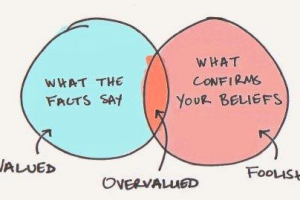Time isn’t the main thing. Time is the only thing.
Managing time as part of your sales training programme.
A recurring theme amongst the individuals and teams we work with is prioritising.
I am loathe to say ‘time management’ as that can be misleading – more often than not it is the inability to prioritise the list of things to do rather than the management of time itself which is problematical.
Easier said than done and I say that from personal experience.
Continually.
Over the years I have tried numerous techniques and tricks all of which have been met with various levels of success, i.e. most if not all have failed me.
Or I have failed them.
I have moved from old school diary / write-it-all-down methods to any number of digital platforms and back again, currently using diary and notebook.
I know people who don’t need to write things down and those who use the most sophisticated techniques – whatever, there will be a method out there that works for you and your sales team.
To start with, you need to know what is important.
In my opinion in the context of sales, customers and revenue generating activities should come first and with that said, I am surprised, in sales training sessions, at the number of people who will do anything but make outbound sales calls or especially spend time prospecting.
It is a worthwhile exercise to block off dedicated time each day for connecting with new customers – 2-3 hours each day is what Chet Holmes suggests in his book ‘The Ultimate Sales Machine’ (one of the best sales training and sales coaching books around, despite the title.)
Who wants to argue with Chet?
Break all other activities down into degrees of importance and urgency – not everything is urgent, despite what customers might demand from you and not everything has the same level of importance.
But only YOU can know that and what looks like urgent and important in the morning might change in a matter of hours if not minutes.
It is your responsibility to manage that hierarchy.
Brian Tracy made a fortune with the book EAT THE FROG – so let’s look no further than the idea that the first thing you must tackle is the one that you find the most offensive and challenging?
Well, not everything that you find offensive or challenging will be the most impactful for your business development efforts.
Try and isolate that one thing each day that if concluded will have the greatest impact on your long term objectives (usually revenue generating or sales related)
Whether it’s a frog or not, just get it done.
With all the distractions available – as many as 5,000 multi-channel intrusions and interruptions coming at us each day – make sure to take control of what you can control:
– switch of social media channels
– switch off emails in the morning until lunchtime and again in the afternoon (yes you can)
– switch of notifications
Try tracking your activities and the amount of time spent against each task – this is what I find the hardest to do, but it can help you to know where your energy goes each day, against which tasks and for how long.
If you don’t know where you time goes the you can’t realistically expect to change those habits.
Chunk your time
Various sources will tell you that the optimum time to spend uninterrupted is 45 minutes or 90 minutes or somewhere in between.
Or longer.
It’s maybe less scientific and more personal that you find your own optimum level and seek to work within those limits – take the well-earned break at the end, then go again.
Rinse and repeat.
Work from wherever is best for you
Working from home has its disadvantages – it doesn’t work for everyone.
If it works for you, then great but if not don’t fight it – find a place at work that works best for you or a place outside of work.
Creative thinking needs freedom and peace which might be found at a beach.
Why not?
This is about productivity and not conventional behaviour. Do what needs to be done – just make sure that everyone – colleagues and management buys into your thinking.
To List or not to list..
Those who sell you the idea of ‘mind maps’ will explain clearly why lists do not work.
Those who swear by lists will swear by them.
I have tried mind mapping and it’s a great concept that I struggle with.
My lists work occasionally – usually when there are only a few things on the list.
Some even suggest to have 2 lists – one of things to do and another with things not to do.
Not sure – it’s your all – but find a method that will work for you.
You can’t expect much without a plan.
Shift Control is a Sales Training and Sales Coaching consultancy, working with customers – both individuals and organisations – throughout Ireland. For more information email info@shift-control.co.uk







